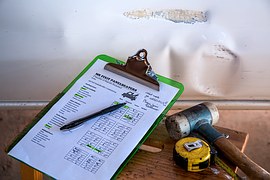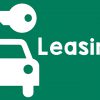How to Buy a Used Car

You really can successfully negotiate the price of your next used vehicle, but you have to do your homework. First, check your credit score. There may be credit card debt or other matters that need to be settled that will improve your position when it comes to financing the vehicle.
Next, assess the market value of the vehicle by checking out a resource like “Blue Book”. Then, use another resource like CARFAX to check the vehicle history. This helps avoid running the risk of buying a used vehicle with hidden problems. Lastly, don’t forget that the dealer probably got the vehicle for pennies on the dollar during a trade-in for a new car purchase, so they have a lot of room to negotiate price.
Always Take the Vehicle for a True Test Drive
 Do not just drive around the block at the dealership on a slow moving local road -make sure you test drive on a high speed highway. Many car problems will not be as noticeable at slow speeds, so this is essential. While you’re at it, swing by your mechanic so the vehicle can be inspected.
Do not just drive around the block at the dealership on a slow moving local road -make sure you test drive on a high speed highway. Many car problems will not be as noticeable at slow speeds, so this is essential. While you’re at it, swing by your mechanic so the vehicle can be inspected.
Mentally take dollars off if the color is not exactly what you had in mind. Make sure all safety lights are operational, as well as any special features the vehicle may have. A cracked cup holder can ruin your day should your drink spill, and making the repair yourself might cost far more than you would think. Same for any missing knobs, latches, vent covers, etc. Make sure the floor mats match the vehicle’s interior. Every little thing you notice that is not “perfect” is cause to further lower the price. The salesperson might tell you that you cannot expect better because you are buying a used vehicle. Remind that salesperson that there are many used vehicles that are not damaged, and many car dealerships that make repairs for the customer.
Keep Your Emotions in Check –Be Prepared to Walk Away
Once you have determined the true value of the vehicle, consider making an offer that is 20% less. This gives you room to negotiate; allowing you to raise your offer as the salesperson negotiates the price by making counter offers without going over your determined value of the vehicle. If the salesperson is not meeting your price objective, ask to speak directly with the manager. Tell the manager exactly why – in excruciating detail – the price should be discounted and your budgetary limits. If the manager refuses to budge, just leave. There are lots of other places to shop for the right vehicle at the right price. But, if you are able to agree on a price on the vehicle, sit down and sign the papers – unless you want to really try for one last discount.
This sounds dramatic, but it is known to work.
The truth is the dealership wants to sell that vehicle far more than you could ever want to buy it. This gives you, the consumer, incredible leverage to push for one last discount. Go through all the paperwork and come to the point where you are to place your final signature on the page to complete the sale, then…STOP.
Stay in Control of the Sale
 Sit back in thought, and then return the unfinished paperwork to the manager. Regretfully admit that, even with all the discounts to the price, it is still just out of your reach. Apologize profusely for taking the salesperson’s and manager’s time, then wistfully say something about how much you really wish you could afford that vehicle. Then walk out the door! Chances are, within the next 48 hours you will get a phone call from the dealership offering a final discount. This will most likely not be a substantial discount, but may be just enough to make the purchase really worthwhile for you.
Sit back in thought, and then return the unfinished paperwork to the manager. Regretfully admit that, even with all the discounts to the price, it is still just out of your reach. Apologize profusely for taking the salesperson’s and manager’s time, then wistfully say something about how much you really wish you could afford that vehicle. Then walk out the door! Chances are, within the next 48 hours you will get a phone call from the dealership offering a final discount. This will most likely not be a substantial discount, but may be just enough to make the purchase really worthwhile for you.
One final note: when you pick up the vehicle, make sure the spare tire and jack are in the trunk before you drive away, and that the sound system or tires have not been swapped out since you last saw the vehicle. Remember, the dealership is negotiating for their best deal too!



 Login
Login






